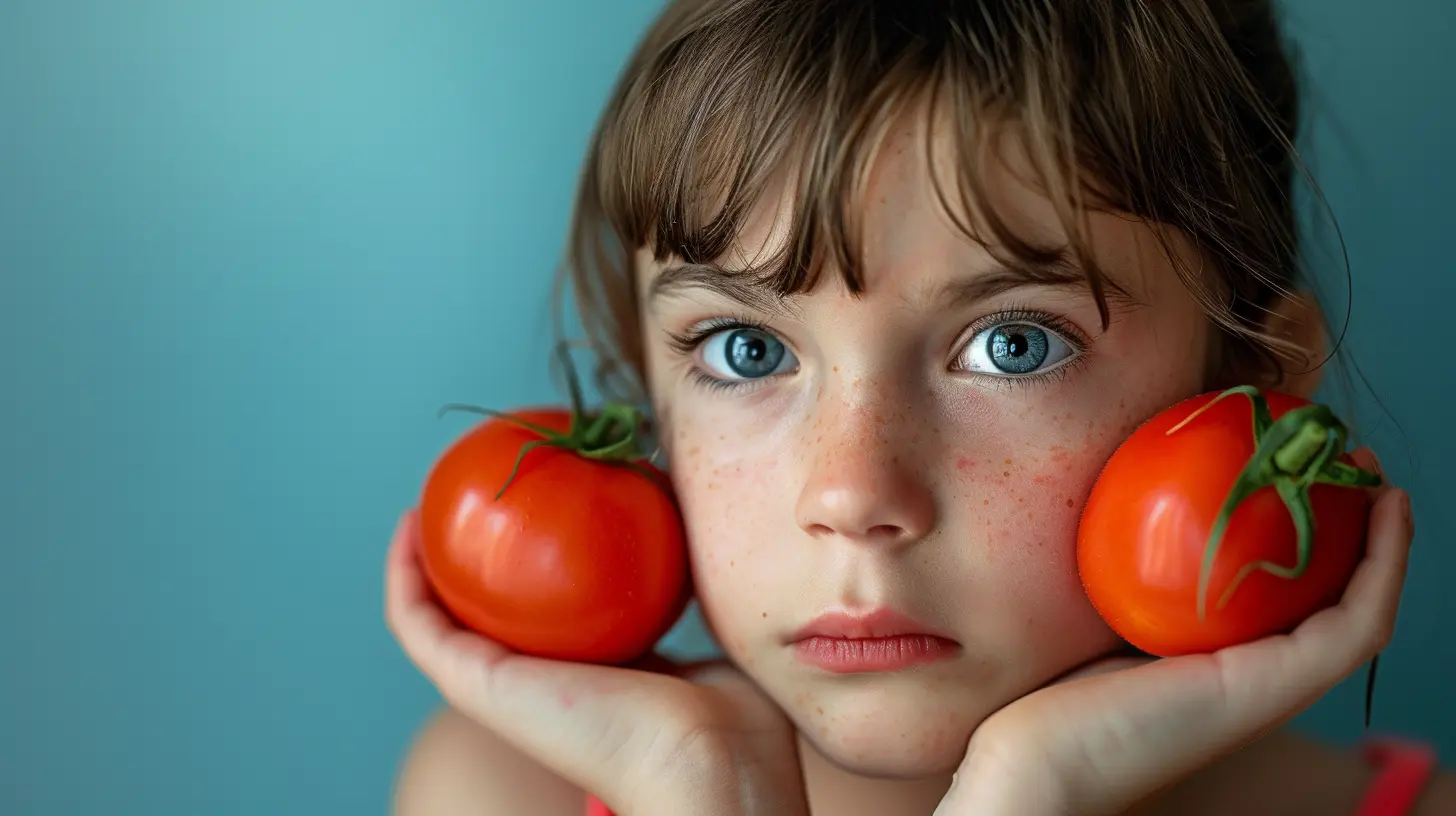Understanding Food Sensitivities in Children: Early Signs and Solutions
12 June 2025
Imagine this: you give your child a glass of milk, and instead of a happy, satisfied little face, you see tears, a rash, or even a messy stomach situation an hour later. You start wondering, “Is it something they ate?” If that scenario sounds familiar, you’re not alone. Food sensitivities in children are more common than parents often realize—and they can be sneaky!
Understanding food sensitivities can feel like navigating a minefield while blindfolded. But don’t worry—you’ve got this, and we’re here to help guide you. Let’s break it down in plain English, with a big side of empathy and practical advice.
What Are Food Sensitivities, Really?
Before we dive into spotting signs and crafting solutions, let's get clear on what food sensitivities actually are.Unlike food allergies—which involve the immune system reacting instantly and often dramatically—food sensitivities are more like the body’s slow protest. It's as if your child's tummy or system is whispering, "Hey, this food doesn’t sit right with me," rather than screaming it.
A food sensitivity (also called food intolerance) happens when the digestive system has trouble processing a particular food. It’s not life-threatening like an allergy, but it can cause a LOT of discomfort—think stomachaches, headaches, eczema, behavioral shifts, and more.
Common Culprits Behind Food Sensitivities
Kids can be sensitive to all sorts of foods, but some usual suspects show up more often than others:- Dairy (milk, cheese, yogurt)
- Gluten (wheat, barley, rye)
- Soy
- Eggs
- Artificial additives (like food coloring and preservatives)
- Corn
- Citrus fruits
These foods aren’t “bad,” but if your child’s body doesn’t agree with them, they can become real troublemakers.
Early Signs to Watch Out For
Spotting a food sensitivity isn't always straightforward. Sometimes, the symptoms show up hours—or even days—after your child eats the offending food. So how do you know what to look for?1. Tummy Troubles
Kids, especially little ones, often can’t quite explain how they’re feeling. So, you’ll hear vague complaints like “My tummy hurts,” or see them clutching their belly after meals.Look for recurring:
- Bloating
- Gas
- Diarrhea or constipation
- Nausea
If these become frequent flyers in your household, you might be dealing with a sensitivity.
2. Skin Reactions
Mysterious rashes? Persistent eczema outbreaks? Suddenly itchy skin? Sometimes, what your child eats can show up on their skin like an unwanted billboard.3. Mood and Behavior Shifts
Food affects how kids feel—in their bodies and their minds. Kids with sensitivities might become irritable, hyperactive, moody, or even anxious after eating certain foods.Ever feel like your child becomes a totally different person after a party full of cake and soda? That’s not your imagination.
4. Chronic Fatigue or Headaches
If your child seems unusually tired (even after a good night’s sleep) or complains of frequent headaches, something in their diet might be wearing them down.5. Frequent Ear Infections or Congestion
Some kids with food sensitivities experience inflammation that leads to constant stuffy noses, ear infections, or sinus issues. If you're making back-to-back pediatrician visits, it might be time to explore what’s going on with their diet.
How Are Food Sensitivities Different from Allergies?
Let’s make this crystal clear: food allergies involve an immune response. Think hives, swelling, vomiting, and in severe cases, anaphylaxis. These reactions are typically immediate and can be serious—even life-threatening.Food sensitivities, on the other hand, don’t involve the immune system in the same way. The reactions are slower, less severe, but often more chronic and frustrating.
Think of allergies as a fire alarm—screeching and urgent. Sensitivities? They’re more like a dripping faucet. Annoying? Absolutely. Easy to ignore? Sure—until it causes bigger problems.
How to Identify the Culprit: Your Game Plan
Trying to figure out exactly what's bothering your child can feel like playing detective. Here’s a step-by-step guide to getting answers (without losing your mind):1. Start a Food Diary
Yep, good old pen and paper. Or the Notes app on your phone. Start jotting down:- What your child eats
- When they eat it
- Symptoms or behaviors that follow
Patterns usually surface in a week or two.
2. Try an Elimination Diet (With Caution)
An elimination diet involves removing suspected trigger foods from your child’s meals for 2-4 weeks, then reintroducing them one at a time. Keep watching for reactions.Important: always do this under medical supervision, especially with kids. Cutting out entire food groups can deprive them of essential nutrients.
3. Consider Testing
Some pediatricians or allergists offer food sensitivity tests (blood tests, skin prick tests, etc.). While these can give clues, they’re not always 100% accurate. Don’t rely on them alone.What to Do If You Confirm a Sensitivity
So, you’ve connected the dots. Now what?1. Adjust the Diet—Gently
If dairy’s the issue, look for lactose-free or dairy-alternative products like almond or oat milk. If gluten’s the culprit, there are tons of gluten-free options everywhere now that still taste great (promise!).It’s not about total restriction—it’s about replacement and creativity.
2. Read Labels Like a Pro
Processed foods are full of hidden triggers—especially dairy, gluten, soy, and artificial stuff. Get in the habit of flipping boxes around and scanning ingredients like a parent on a mission (because you are!).3. Focus on Whole Foods
The simpler, the better. Whole fruits, veggies, lean proteins, and whole grains (if tolerated) are your best friends. Think of it as clearing the “noise” from your child’s diet so their body can reset and heal.4. Offer Emotional Support
Changes in diet can be tough for kids (and parents too, honestly). Be empathetic. Get them involved in grocery shopping and meal prep. Let them choose their dairy-free yogurt or decorate their gluten-free pancakes.Make it fun, not a punishment.
When to Talk to a Doctor or Specialist
If you’ve tried eliminating certain foods, and symptoms persist—or if your child seems to be reacting to everything—it’s time to bring in the experts.Pediatricians, allergists, and pediatric dietitians can all help map out a safe, well-balanced plan that doesn’t just avoid triggers—but gives your child everything they need to grow and thrive.
And remember—you don’t have to figure it all out overnight. Baby steps (pun intended!) go a long way.
Tips for Managing Food Sensitivities at School and Social Events
This one’s big. Kids eat a lot of meals and snacks without us nearby. Here's how to make sure they stay safe (and included):- Talk to teachers: Educate caregivers and teachers about your child’s sensitivity. Provide safe snacks if needed.
- Get creative with lunchboxes: Pinterest is full of fun food ideas that are allergy- or sensitivity-friendly.
- Teach your child the “why”: Help them understand that this isn’t about being different—it’s about making their body feel good.
Simple Swaps Every Parent Should Know
Changing your child’s diet doesn’t have to be a big drama. Here are some go-to food swaps that can save your sanity:| Instead of... | Try this... |
|--------------------|-------------------------|
| Cow's Milk | Almond, oat, or coconut milk |
| Wheat Bread | Gluten-free or rice bread |
| Butter | Olive oil or vegan butter |
| Cheese | Cashew or coconut cheese |
| Soy Sauce | Coconut aminos |
| Sugar-packed cereal| Oats with fruit |
The Emotional Toll: Let’s Talk About It
Parenting a child with food sensitivities can be exhausting. There’s guilt (“Did I cause this?”), fear (“Will they react today?”), and frustration (“Can’t we just eat normally again?”).First off, breathe. It’s not your fault. Your job isn’t to be perfect—it’s to be present and proactive. Your love, patience, and willingness to listen are already making a world of difference.
You’ve got this, even on the days it doesn’t feel like it.
Final Thoughts: You’re Not Alone
Food sensitivities in children are challenging—but manageable. With the right information, supportive experts, and a whole lot of parental instinct, you can help your child feel their absolute best.It’s a journey, not a sprint. But every step you take is one closer to a healthier, happier kiddo—and a more peaceful dinner table.
all images in this post were generated using AI tools
Category:
Childrens HealthAuthor:

Kelly Snow
Discussion
rate this article
2 comments
Cooper McInerney
Thank you for this insightful article! It truly helps in understanding and supporting our children.
June 16, 2025 at 4:05 AM

Kelly Snow
Thank you for your kind words! I'm glad you found the article helpful.
Astraea McLaurin
Thank you for sharing this insightful article! Understanding food sensitivities can be overwhelming, but recognizing early signs and finding solutions is crucial for our children’s well-being. Your guidance is a valuable resource for all parents.
June 13, 2025 at 4:56 AM

Kelly Snow
Thank you for your kind words! I’m glad you found the article helpful in navigating food sensitivities for children.


